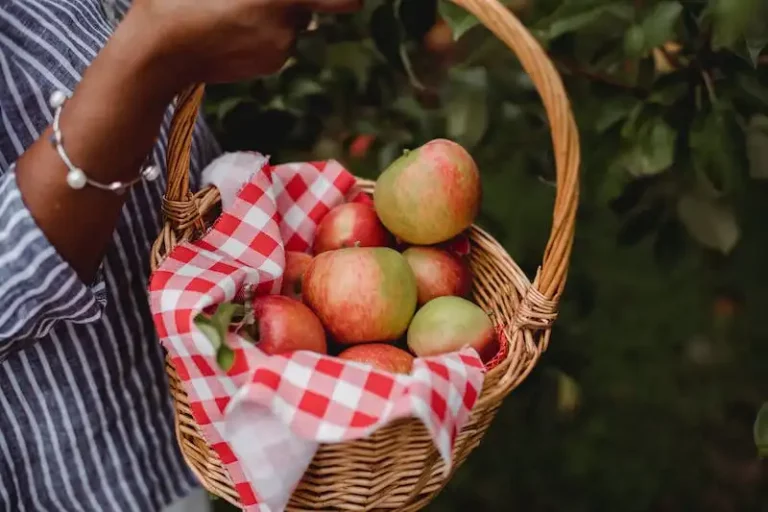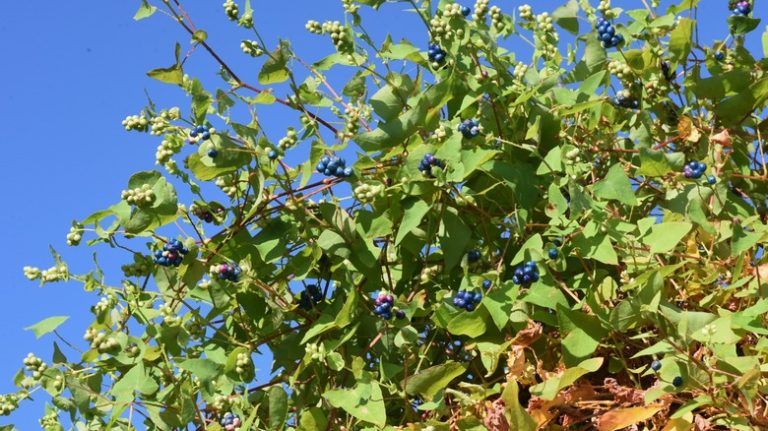Russian sage (Salvia) is a beautiful flowering plant that adds a touch of grace and elegance to any garden. With its tall, upright growth and delicate lavender-blue flowers, Russian sage is a proven winner in landscaping and design. It is grown for its attractive foliage, long blooming period, and resistance to deer and pests. This hardy perennial is a great addition to gardens in zones 5 to 9 and is a favorite among gardeners for its easy care and versatility.
One of the most frequently asked questions about growing Russian sage is regarding its care and maintenance. Russian sage is a low-maintenance plant that requires little attention once established. It prefers full sun exposure and well-drained soil. Overwatering can be detrimental to its growth, so it is important to water sparingly. Additionally, Russian sage does not require supplemental fertilizer, although a light application of a balanced fertilizer in early spring can promote healthier growth.
Russian sage can be grown from seeds or propagated by dividing its roots. Planting them in late spring or early summer is ideal, as it gives the plant enough time to establish its roots before the colder months. It is important to space the plants 2 to 3 feet apart to allow for air circulation and prevent diseases. Russian sage is generally frost tolerant, but it is recommended to cut it back in late fall to encourage new growth in the spring.
Russian sage is a versatile plant that can be used in various garden settings. Its tall, upright form makes it an excellent choice for creating a dramatic focal point or a privacy screen. It looks stunning when planted in masses or used as a backdrop for shorter plants. The plant’s tiny flowers, however, may need staking to prevent them from falling over. Russian sage’s foliage is also highly aromatic, giving off a pleasant scent when touched or brushed against.
In conclusion, growing Russian sage in your summer garden can provide you with a beautiful and easy-to-care-for plant that adds color, texture, and fragrance to your landscape. Whether you choose to grow it from seed or propagate it, Russian sage is a reliable and attractive addition to any garden. Its resistance to pests and deer, long blooming period, and low maintenance needs make it a popular choice among gardeners. So why not give Russian sage a try and enjoy its beauty all summer long?
Source: University of Illinois Extension, “Russian Sage (Perovskia atriplicifolia)”. Horticulture Corner
Russian sage Perovskia atriplicifolia
Russian sage Perovskia atriplicifolia is a beautiful and versatile sub-shrub that is a great addition to any garden. It is known for its drought-tolerant nature, making it a perfect choice for those hot summer months. Russian sage has a stunning silver foliage that provides a nice contrast to other plants in the garden.
When planting Russian sage, it is important to give it enough space to grow. Spacing plants about 2 to 3 feet apart is recommended to allow for proper air circulation and prevent diseases. Russian sage can reach a height of 3 to 5 feet and has a spread of about 2 to 4 feet.
Russian sage is a hardy plant that requires minimal care. It can be planted in a variety of soil types and tolerates both heavy clay and sandy soils. It is also resistant to deer and other wildlife, making it a great choice for gardens in areas with frequent wildlife visits.
In terms of blooming, Russian sage is a late-season bloomer, typically flowering from late June until early fall. The tiny lavender-colored flowers make for a stunning display and attract butterflies and bees to the garden. To encourage continued flowering, it is recommended to deadhead spent blooms.
Pruning Russian sage is not necessary for its survival, but it can help maintain a more compact and tidy appearance. In early spring, you can prune back about one-third of the plant’s height to encourage new growth and prevent it from becoming leggy.
Russian sage can be easily propagated from seed or cuttings. If you’re starting from seed, it’s best to plant them indoors in late winter and transplant the seedlings outdoors after the last frost. If you’re using cuttings, take them in early summer and root them in water or a well-draining soil mix.
While Russian sage is a low-maintenance plant, it can benefit from supplemental fertilizer. Apply a balanced fertilizer once in the spring and again in mid-summer to provide the plant with the nutrients it needs to thrive.
Although Russian sage is a hardy and versatile plant, it’s important to note that it can be invasive in some areas. Check with your local gardening guide or extension office to ensure it’s suitable for your specific location before planting.
In conclusion, Russian sage Perovskia atriplicifolia is a beautiful and low-maintenance plant that adds height and color to any garden. Its drought-tolerant nature, resistance to pests and diseases, and stunning lavender-colored flowers make it a popular choice among gardeners. Whether you plant it in the ground or in a container, Russian sage is sure to be a showstopper in your summer garden.
If you have any questions or need more information about caring for Russian sage, check out our FAQ’s or browse through our gallery of pictures for inspiration. Stay up to date with the latest news and growing tips for Russian sage by subscribing to our newsletter.
Latest Horticulture News
Summer is the perfect time to grow Russian Sage in your garden. This low-maintenance plant is known for its drought-tolerant nature and beautiful purple flowers. Russian Sage requires very little water and can simply thrive in hot and dry conditions.
One important characteristic of Russian Sage is its resistance to pests and diseases. This makes it an attractive choice for those who want a fuss-free plant in their garden. Russian Sage is also very easy to grow, requiring minimal care and attention.
When planting Russian Sage, make sure to give it enough space to grow. This sub-shrub can reach a height of up to 3 feet and a width of 2-4 feet. It is important to provide adequate spacing between plants to allow proper air circulation and prevent diseases.
Russian Sage is best grown in well-drained soils. It can tolerate a variety of soil types, including sandy or clay soils. However, it is important to avoid overwatering, as this can lead to root rot and plant toxicity.
In terms of fertilizing Russian Sage, it is best to apply a slow-release fertilizer in the spring. This will provide the necessary nutrients for the plant’s growth throughout the season. Additionally, supplementing with a liquid fertilizer every few weeks can help promote even more vigorous growth.
Pruning Russian Sage is not necessary, but can help maintain a neat and tidy appearance. Simply trim back any dead or damaged branches in late winter or early spring. This will encourage new growth and ensure an attractive plant in the upcoming season.
Russian Sage is known for its long-lasting blooms, which appear in late summer and can continue into the fall. The tiny lavender-blue flowers form dense masses, adding a pop of color to your garden. The contrast of the blue blossoms against the silvery foliage is truly eye-catching.
If you’re looking for an upright plant that won’t flop in your garden, Russian Sage is a great choice. Its sturdy stems provide excellent support, even in windy conditions. However, for those who prefer a more compact variety, there are smaller, dwarf selections available that still maintain the same attractive characteristics.
Russian Sage is a hardy perennial that is resistant to cold winters. It can survive temperatures as low as -30°F (-34.4°C). If you live in an area with harsh winters, Russian Sage is a winner for your garden.
So, if you’re looking to add some color and texture to your garden, why not give Russian Sage a try? With its attractive foliage, long-lasting blooms, and low-maintenance nature, it’s sure to be a hit. If you have any questions about planting or caring for Russian Sage, consult your local nursery or garden center for expert advice.
Sources: Ultimate Russian Sage Guide, Atriplicifolia Varieties, Shutterstock Images
Growing Russian Sage for Your Summer Garden
Russian sage (Perovskia atriplicifolia) is a proven winner in any summer garden. This hardy perennial is a great addition to your landscaping, as it offers a variety of characteristics that make it an ultimate choice for your garden. The plant features beautiful lavender-blue flowers that bloom from midsummer to early fall, creating a stunning display.
Russian sage is a sub-shrub that can grow up to 3-5 feet in height with a spread of 2-4 feet. It has upright growth and can withstand strong winds without staking. Its silver-gray foliage adds interest to your garden even when it’s not blooming. This plant is also deer-resistant and attracts pollinators such as butterflies and bees.
Growing Russian sage is relatively easy, especially if you choose the right location. It thrives in full sun and well-drained soils. This plant is tolerant of a wide range of soil pH levels, but it prefers slightly alkaline conditions. Proper spacing is important, as Russian sage can become invasive if planted too close together. Aim for a spacing of about 2-3 feet between plants.
When planting Russian sage, prepare the area by removing weeds and grass. Dig a hole that is the same depth as the root ball and twice as wide. Gently loosen the roots before placing the plant in the hole. Backfill the hole with soil and lightly tamp it down to remove any air pockets. Water the plant thoroughly to settle the soil.
Russian sage requires little watering once established. It is drought-tolerant and can handle periods of dry spells. However, if you’re experiencing a particularly hot and dry summer, make sure to water the plant regularly. Avoid over-watering, as this can lead to root rot and other diseases.
Pruning Russian sage is simple and can be done in early spring. Cut back the plant to about 6-8 inches above ground level. This will help promote new growth and prevent the plant from becoming too woody. You can also prune Russian sage after it has finished blooming to encourage a second flush of flowers.
If you want to propagate Russian sage, you can do so by dividing the plant in early spring or by collecting the seeds. Divide the plant by digging up the clump and separating it into smaller sections. Replant the divisions in a new location or give them away to friends. To collect the seeds, wait until the flowers have faded and then remove the seedheads. Store the seeds in a cool, dry place until you’re ready to plant them.
Russian sage is also suitable for container planting. Choose a large container with drainage holes and fill it with a well-draining potting mix. Place the plant in the container and backfill it with soil. Water the plant thoroughly and place it in a sunny location. Make sure to water the container regularly, as potted plants tend to dry out faster than those planted in the ground.
In conclusion, growing Russian sage in your summer garden is a great choice. It offers beautiful lavender-blue flowers, attractive foliage, and is low-maintenance. Whether you have a formal or informal garden, Russian sage can add a touch of color and scent to your landscape. So why wait? Get started and enjoy the beauty of Russian sage in your garden this summer.
Sources: Shutterstock, The Spruce.



